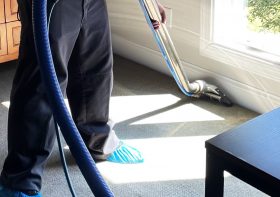How clean is your hospital room? To reduce the spread of infections

First and foremost, it is essential to understand the significance of cleanliness in healthcare settings. Hospital-acquired infections (HAIs) pose a significant threat to patients, healthcare workers, and visitors alike. These infections not only lead to prolonged hospital stays and increased healthcare costs but also result in morbidity and mortality. According to the Centers for Disease Control and Prevention (CDC), approximately one in every 31 hospital patients in the United States suffers from at least one HAI on any given day. Furthermore, HAIs are estimated to contribute to tens of thousands of deaths annually, making them a pressing public health concern.
Hospital room cleanliness plays a pivotal role in preventing HAIs. Every surface in a hospital room, from bedrails to doorknobs to countertops, has the potential to harbor harmful pathogens. Without proper cleaning and disinfection, these pathogens can persist on surfaces and contribute to the transmission of infections. Moreover, hospital room cleanliness extends beyond visible surfaces to include the air quality within the room. Airborne pathogens, such as those responsible for influenza and tuberculosis, can linger in the air for extended periods, posing a risk of transmission to susceptible individuals.
Despite the critical importance of cleanliness in infection control, maintaining consistently high cleanliness standards in hospital rooms remains a challenge. Factors such as high patient turnover, inadequate staffing levels, and insufficient resources can hinder efforts to keep hospital environments clean. Additionally, the emergence of multidrug-resistant organisms (MDROs) further complicates cleanliness efforts, as these pathogens require specialized cleaning and disinfection protocols to effectively eliminate.
The consequences of inadequate hospital room cleanliness can be severe. Patients who acquire infections during their hospital stay experience prolonged illness, increased healthcare costs, and elevated mortality rates. Healthcare workers are also at risk of acquiring and transmitting infections if proper infection control measures are not in place. Furthermore, outbreaks of infectious diseases within healthcare facilities can have broader public health implications, particularly in the case of highly contagious pathogens such as norovirus or methicillin-resistant Staphylococcus aureus (MRSA).
To address the challenges associated with hospital room cleanliness, healthcare facilities must implement comprehensive cleanliness protocols informed by evidence-based practices. These protocols should encompass all aspects of cleaning and disinfection, including surface cleaning, equipment maintenance, and waste management. Furthermore, education and training programs should be provided to healthcare personnel to ensure compliance with cleanliness standards and promote a culture of infection prevention.
In addition to routine cleaning and disinfection, the use of innovative technologies can enhance the effectiveness of cleanliness efforts in hospital rooms. Ultraviolet (UV) light disinfection systems, for example, can be used to supplement traditional cleaning methods by targeting hard-to-reach areas and reducing the burden of MDROs. Similarly, antimicrobial surfaces and textiles can help mitigate the risk of pathogen transmission by inhibiting the growth of bacteria and other microorganisms.
Beyond technological innovations, improvements in hospital design and layout can also contribute to enhanced cleanliness. The integration of infection control principles into the design of healthcare facilities can facilitate more efficient cleaning and reduce the risk of cross-contamination between patient rooms. For example, the use of antimicrobial materials in high-touch surfaces and the implementation of hands-free fixtures can help minimize the spread of pathogens within hospital environments.
Ultimately, ensuring the cleanliness of hospital rooms is essential for safeguarding the health and well-being of patients, healthcare workers, and the broader community. By prioritizing infection control measures and implementing comprehensive cleanliness protocols, healthcare facilities can reduce the incidence of HAIs and mitigate the spread of infectious diseases. However, achieving and maintaining high cleanliness standards requires ongoing commitment, investment, and collaboration across all levels of the healthcare system.
In conclusion, hospital room cleanliness is a critical component of infection control efforts in healthcare settings. The consequences of inadequate cleanliness can be severe, leading to increased morbidity, mortality, and healthcare costs. By implementing evidence-based cleanliness protocols, leveraging innovative technologies, and incorporating infection control principles into hospital design, healthcare facilities can enhance cleanliness standards and reduce the risk of HAIs. Ultimately, prioritizing cleanliness is essential for promoting patient safety and maintaining the overall integrity of healthcare delivery systems.




Leave a Reply